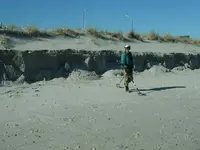hunter_46356
Hero Member
- Joined
- Feb 12, 2012
- Messages
- 502
- Reaction score
- 306
- Golden Thread
- 0
- Location
- Indiana/Florida
- Detector(s) used
- NOx 800, AT Pro
- Primary Interest:
- All Treasure Hunting
OK so this might be one of those stupid questions but I need to be sure I understanding what a beach cut is. Is the definition of a beach cut a cut through the beach where water is or has moved in a perpendicular manor from say the dry sand to the water line? Something that may be formed from storm or pooling water cutting back to the water line and during an outgoing tide.
Upvote
0




